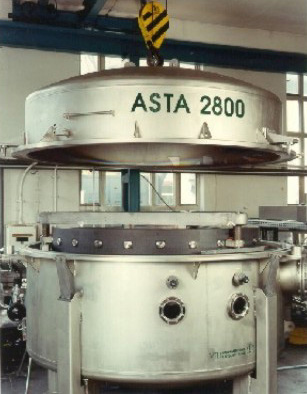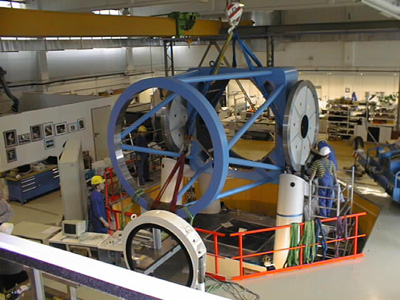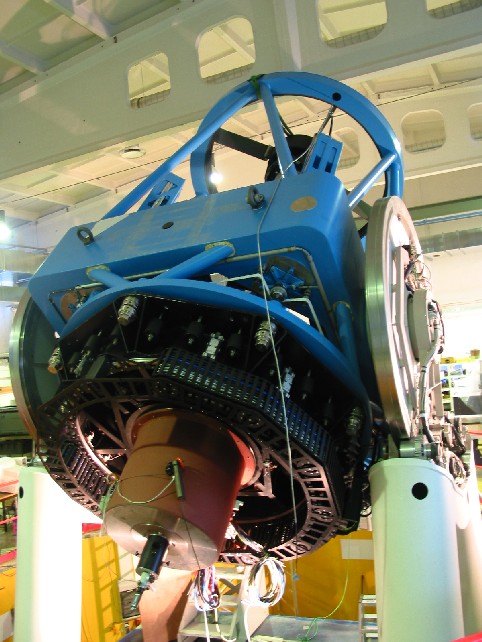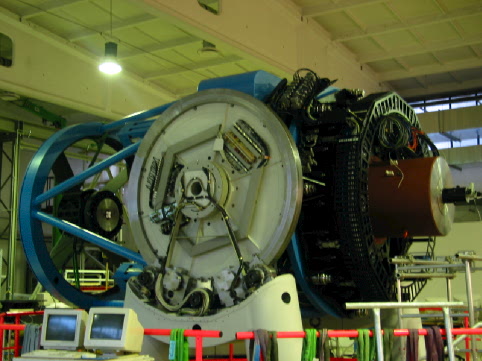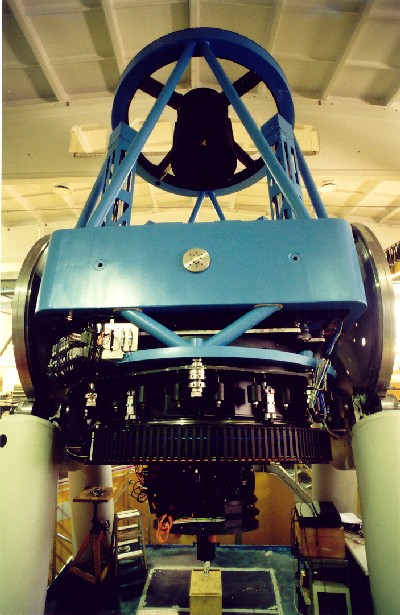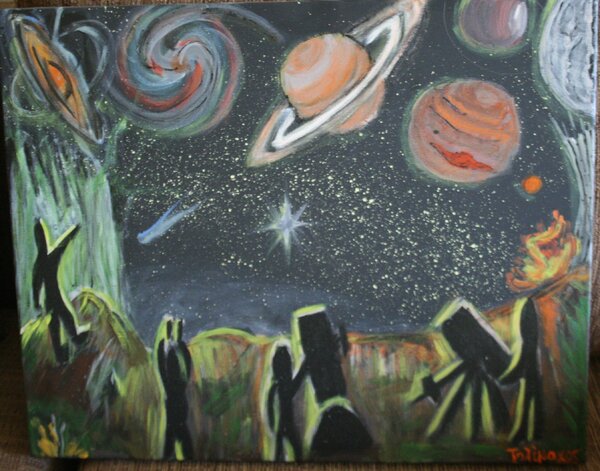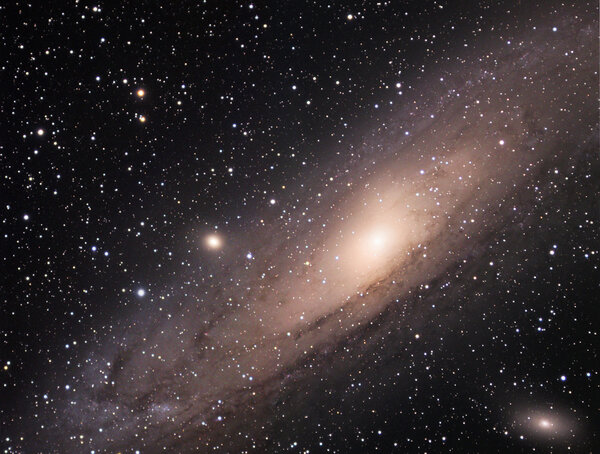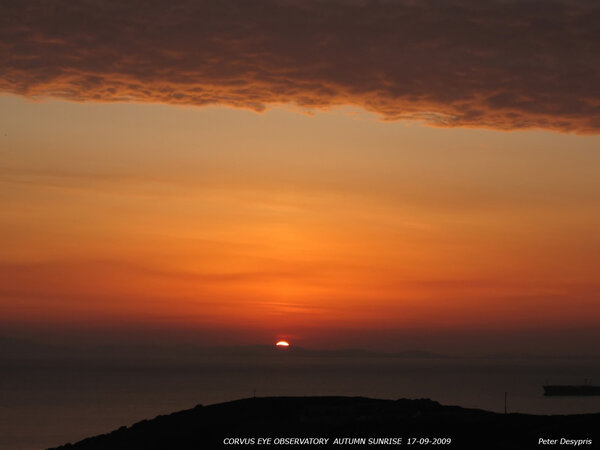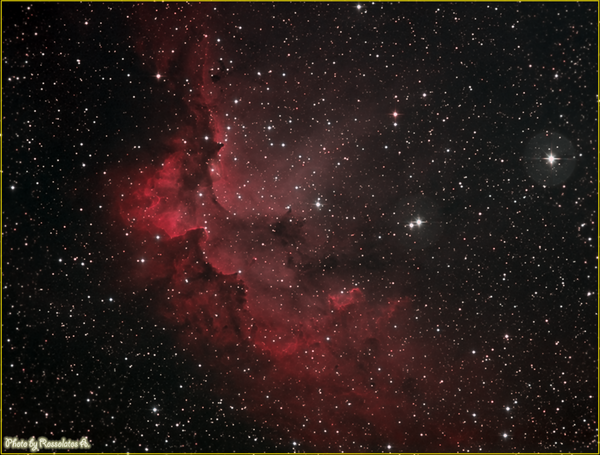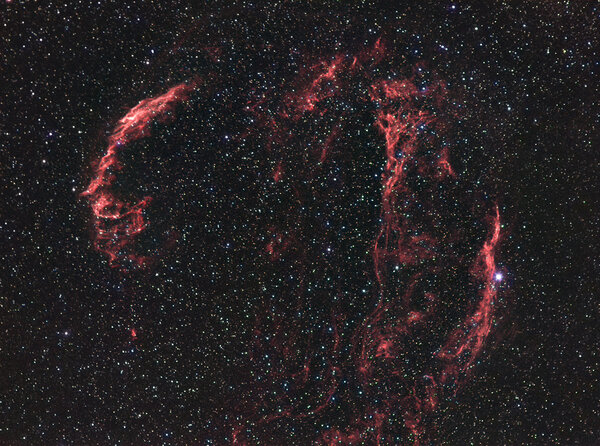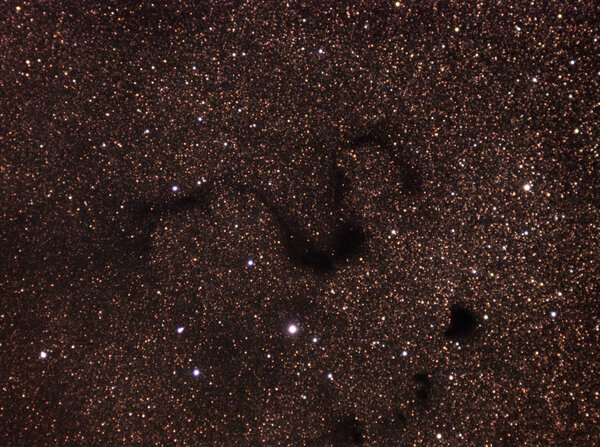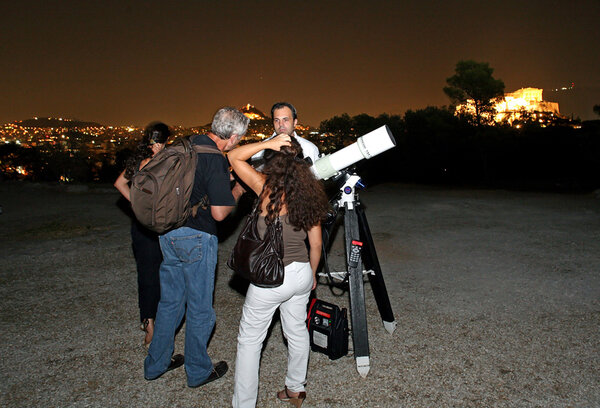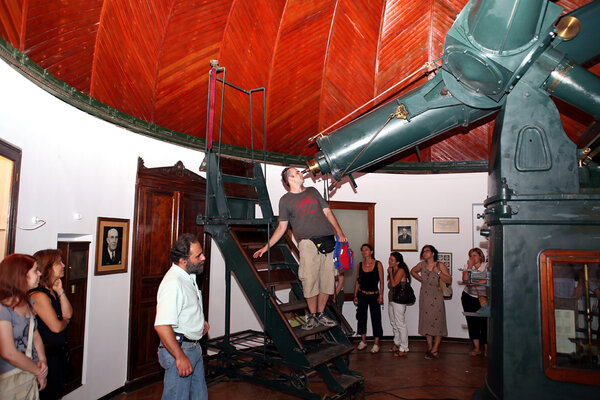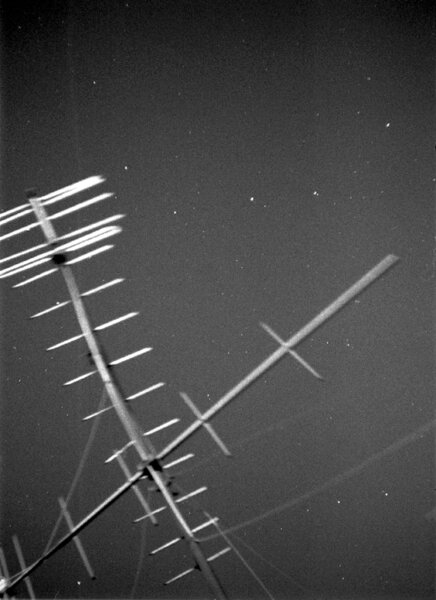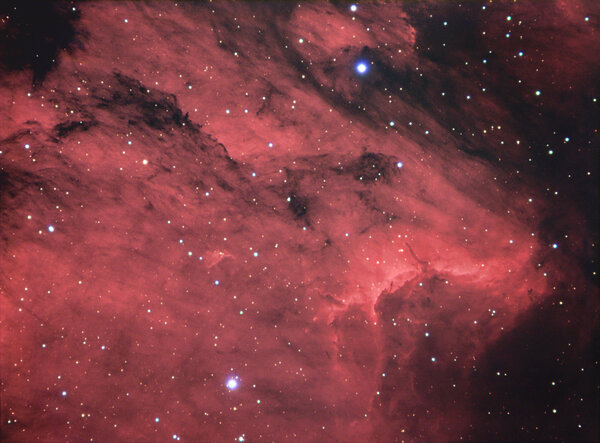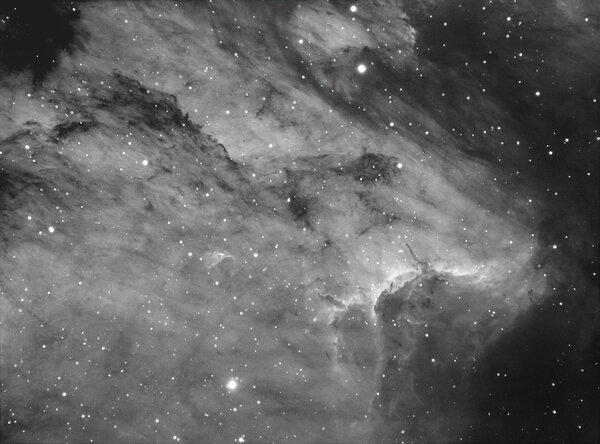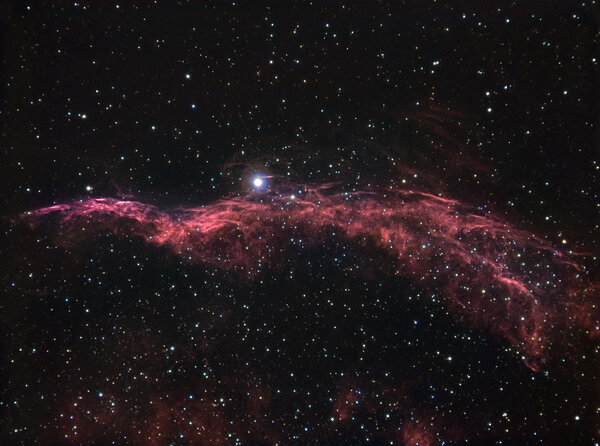-
Αναρτήσεις
1731 -
Εντάχθηκε
-
Τελευταία επίσκεψη
-
Ημέρες που κέρδισε
1
Τύπος περιεχομένου
Forum
Λήψεις
Ιστολόγια
Αστροημερολόγιο
Άρθρα
Αστροφωτογραφίες
Store
Αγγελίες
Όλα αναρτήθηκαν από Fred Ley
-

Ο Αρίσταρχος Σκουριάζει στην κορυφή του Χελμού
Fred Ley απάντησε στην συζήτηση του/της μαρκετος σε Η αστρονομία στην Ελλάδα
Hi, Here are a few images of the telescope on the Zeiss web site when it was being assembled at the Zeiss factory that gives us an idea of what it looks like. Everyone would like to have a 90-inch telescope or 2.3-meters for those that use the metric system. Sorry about that, but I can't get used to metrics. -Fred -
Hi Telemahos, Nice renderings you have there. It is nice to do Space Art, it allows one to visit and to show places created in ones thoughts. I work with acrylics, although I did use oils on one rendering. A couple of my renderings are on my personal album here at Astrovox and on my web site at http://www.instrumentsoflight.com/spaceart.html in case you may be interested in viewing them. -Fred
-

6ο Παν/νιο Συνέδριο Ερασ/κής Αστρ/μίας, Αλεξ/πολη Σεπτ 2009
Fred Ley απάντησε στην συζήτηση του/της dimitris σε Η αστρονομία στην Ελλάδα
Andreas, Enjoed posting number II from the convention. Pictures certainly are worth a billion words. Perhaps at the next get-together I will give a couple of talks. Again, thanks for the updates. -Fred -

6ο Παν/νιο Συνέδριο Ερασ/κής Αστρ/μίας, Αλεξ/πολη Σεπτ 2009
Fred Ley απάντησε στην συζήτηση του/της dimitris σε Η αστρονομία στην Ελλάδα
Andreas, Thanks for posting the images of the convention. I can't be there this time and greatly welcome your postings. Have Lots of Fun, -Fred -
-

***ΠΡΟΣΟΧΗ: Μεταφορά server του astrovox***
Fred Ley απάντησε στην συζήτηση του/της astrovox σε Λοιπές Αστρονομικές Συζητήσεις
Hi Andreas, Yeah, when I logged on this morning and saw the "Astrovox" logo where photographs should be I figured that Dr. Astrovox was busy in his laboratory working on the site. -Fred -

Autumn Sunrise 17-09-2009
Ο Fred Ley σχολίασε σε Despet για αστροφωτογραφία Ήλιος wide field (ηλιοβασιλέματα, τοπία κτλ)
-

Μουσικη και Παρατηρηση!
Fred Ley απάντησε στην συζήτηση του/της Foehammer σε Αστρονομική Παρατήρηση - Γενική συζήτηση
I mentioned, a while back, and on a different Astrovox thread that the person I mainly listen to, among others, is Jonn Serrie. Have seven of his cd's. At Amazon.com one can hear short samples of his music. Here is the amazon link and the link to his web site. -Fred His site... http://www.vipinfo.com/jonn/ Amazon samples... http://www.amazon.com/gp/recsradio/radio/B00008IUWP/ref=pd_krex_listen_dp_img?ie=UTF8&refTagSuffix=dp_img -

Νεφέλωμα Μάγος - NGC7380 (Full Color)
Ο Fred Ley σχολίασε σε Rossolatos Antonios για αστροφωτογραφία Νεφελώματα
-
-

πώς μπορώ να βρω την θέση ενός αστεριού;;
Fred Ley απάντησε στην συζήτηση του/της Ελευθεριος σε Παρατήρηση Βαθύ Ουρανού
These sites may be of help. -Fred http://murison.alpheratz.net/calculators/OrbitalElements http://www.cfa.harvard.edu/iau/Ephemerides/ http://neo.jpl.nasa.gov/cgi-bin/neo_elem -
-

εκδηλωση στο ΘΗΣΕΙΟ
Ο Fred Ley σχολίασε σε astrozakis για αστροφωτογραφία Αστρονομικές δραστηριότητες
-

εκδηλωση στο ΘΗΣΕΙΟ
Ο Fred Ley σχολίασε σε astrozakis για αστροφωτογραφία Αστρονομικές δραστηριότητες
-

ΕΚΔΗΛΩΣΗ ΣΤΟ ΘΗΣΕΙΟ ΜΕ ΤΟ ΔΙΟΠΤΡΙΚΟ ΤΗΛΕΣΚΟΠΙΟ ΤΩΝ 40cm !
Fred Ley απάντησε στην συζήτηση του/της geonik σε Η αστρονομία στην Ελλάδα
I was unable to make it, hope to be able to make it next time. At least it looks like the event was well attended. -Fred -

ΕΚΔΗΛΩΣΗ ΣΤΟ ΘΗΣΕΙΟ ΜΕ ΤΟ ΔΙΟΠΤΡΙΚΟ ΤΗΛΕΣΚΟΠΙΟ ΤΩΝ 40cm !
Fred Ley απάντησε στην συζήτηση του/της geonik σε Η αστρονομία στην Ελλάδα
Well, I guess I know where I'll be this Saturday night. Looking through an eyepiece and sucking up photons. Actually I have seen and taken some nice slides of the telescope but have never observed through it. I have heard that the 16-inch lens is of a superior quality. -Fred -

ΠΡΟΒΛΗΜΑΤΙΣΜΟΣ
Fred Ley απάντησε στην συζήτηση του/της Τρισδιάστατος σε Η γωνιά των νέων αστροπαρατηρητών
I thought that I might throw in a few suggestions. Before you go out and purchase a telescope, it would be better if you went to a local star party and looked through other individuals instruments. That would give you an idea as to what they can do. Ask questions (how else do we learn) as to how heavy is the telescope, does it come with a clock drive or can one be bought later on, pricing, accessories available, ease of use, issues with collimation (maybe a person would prefer a refractor as they pretty much do not need collimation), market resale value, how much weight can the mounting support (one doen't want to buy an instrument and load up the mount with a guide scope, ccd camera, electric focusers, heavy eyepieces only to find out that they have exceeded the laws of physics). How one plans to use the instrument also plays a role. If galaxies is your iterest, then buy a light bucket. The comfortable chairs that pivot in azimuth and altitude are great for binocular viewing. As to making one for a telescope, I would proceed with caution. Many years ago a club member made an 8-inch Newtonian binocular. It was alt-azimuth in configuration. It worked great. The one drawback is that the high magnifications also amplified his heart beat and the image "jumped" with each beat in the eyepiece. I suppose that one could make an instrument that could mask out the heart beat, but it would take additional work to get to that point. Wayne Schmidt's telescope was featured in a back issue of Sky & Telescope in the 90's. Here is a link that will show you his instrument on my web site. It is on the third row and first one on the left. http://www.instrumentsoflight.com/iolsampler.html -Fred -

Athens Sky 1972
Ο Fred Ley σχολίασε σε Fred Ley για αστροφωτογραφία Διάφορες αστρονομικές φωτογραφίες
There certainly was light pollution in Athens back, just not as much as we have today. Back then I was in high school and did not spend much on purchasing film for my camera. So, I do not have many photographs to share form then. I just remembered that I do have an Ektachrome slide showing Deneb and Vega that I took from my roof top. It shows many stars. I will try to locate it, scan it, and post it here for others to see. I noticed that the antenne pole in my photo is not exactly in a vertical position. The photograph needs to be rotated to the right some more. -Fred -
This photographs in itseltf has no major astronomical worthiness, but, what one may find interesting is as to when it was taken. I took this photograph from the roof of our apartment building in 1972 on Vasiilissis Sophias Avenue in Athens. I used a Zeiss Ikon Contaflex camera with a 35mm lens. I do not have any data for the exposure time and must go by memory. Because I did not want any trailing in the photograph, I probably took a 10-20 second exposure. The film was either Kodak Plus-X (125 ASA) or Kodak Tri-x (300 ASA). I have rotated the photograph clockwise 90-degrees in order to have the tv antenna pole in a vertical position so that the horizon is parallel with the bottom of the photograph. Ursa Major is at the top of the image and \"upside-down\". -Fred
-
-
-
-
Hi Ourania. I noticed that you have applied felt to the inside of your tube. From looking at your photos, it looks like the felt is grey in color. It would be preferable to use optical black flocking paper. You can read more about that at this link to Edmund Scientific http://www.edmundoptics.com/onlinecatalog/displayproduct.cfm?productID=1502 One could get some flat black paint in a spray can as a last resort. You may be aware that most issues in a Newtonian arise from the thermal current that are located immediately above the surface of the primary mirror. By having a fan perpendicular to the surface of the mirror, it would continually draw the air currents away form the mirrors surface and greatly imrove the image quality. There is an article about this procedure in a past issue of Sky & Telescope. I have it stored somewhere on my computer. Once located, I can post the link here for you to further read. Don't forget to place a baffle inside your focuser, that also helps immensly. Again, there is information on that at the S & T website too. -Fred
-
The view of Mars is not the same as it is observed at night. The main difference is the contrast. There is very little contrast. I have never sat down and used my collection of color filters to see just what details they may improve upon. But the view is interesting since the observation is being done in broad daylight. -Fred
-
Hi, Just want to add my two bits. I have seen Mars during mid-day in a telescope and have also seen Sirius through an 8x50 viefinder. There are roughly about 600 stars that can be observed during daylight hours. -Fred


